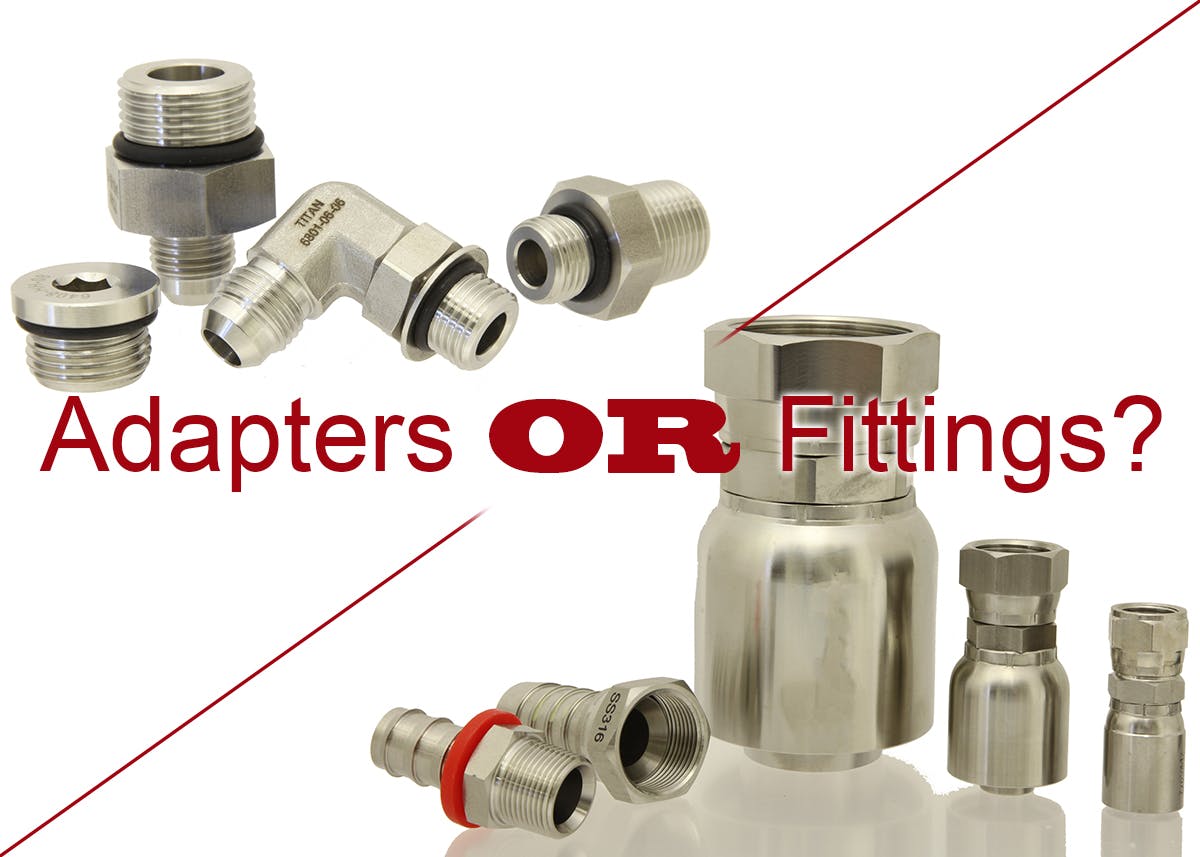Difference between Fittings and Adapters

Image Description: Photo of Titan Fittings and Adapters
Many people who work with plumbing and hydraulic systems use the terms adapters and fittings interchangeably. However, these two implements are different hydraulic accessories and are used for completely different purposes.
Hydraulic Fittings
A fitting is a piece that is used to connect hoses and tubes to one another in a safe and secure manner. By using fittings, hydraulic fluid is allowed to flow through tubing without leaking or fluctuating in pressure. Fittings are normally installed into the major components of a plumbing or hydraulic system. This includes the work port of pumps, valves, cylinders, and motors.
In short, fittings are used to facilitate a secure connection between various hoses and tubes that connect to the major components of a plumbing or hydraulic system. Moreover, various types of fittings can be used to create split flow, change the direction of the hydraulic flow, or change the elevation of tubing lines.
Hydraulic Adapters
While adapters can sometimes be used as fittings, their inherent function is entirely different. These small implements help connect at least two different-sized threads to one another. In other words, hydraulic adapters allow us to connect two different components that would normally be mutually incompatible.
There are some cases in which an adapter could also be a fitting, such as a case where a female ORB cylinder is to be attached to the end of a JIC hose. Here, the appropriate adaptor fitting is ORB male by JIC male. Moreover, ORB adapters are usually also fittings.
Most adapters, however, are not fittings and serve an entirely different function in plumbing and hydraulic systems. Adapters are used to allow interchange between differing component standards and different component sizes. If, for example, you are to connect a metric hose end to a BSPP fitting, you will need to use an adapter to do so.
Proprietary Fit
When making sense of hydraulic hose implements and how to put them together, it is important to understand proprietary fit. The construction of hydraulic hose systems and implements is determined by
a large variety of national and international standards that dictate specifications for sizes and dimensions.
The standard that is most widely used in the United States is dictated by SAE standards. However, different manufacturers, especially those in other countries, will likely be following other standards like ISO.
Whether you are making use of a fitting or an adapter, it is essential that you find the perfect fit to prevent leakages and subsequent damage to your hydraulic or plumbing system. Accordingly, the best fit is a proprietary fit, and this is the case whether you want to match the hose to an application or properly match the threads of fittings and adapters.
Summary
Fittings are implements used to connect hoses and tubes to major components in a hydraulic system. Conversely, adapters are used to allow connections between hydraulic components of different sizes and types. To ensure proper and safe use of either of these two implements, it is important to always look for a proprietary fit.